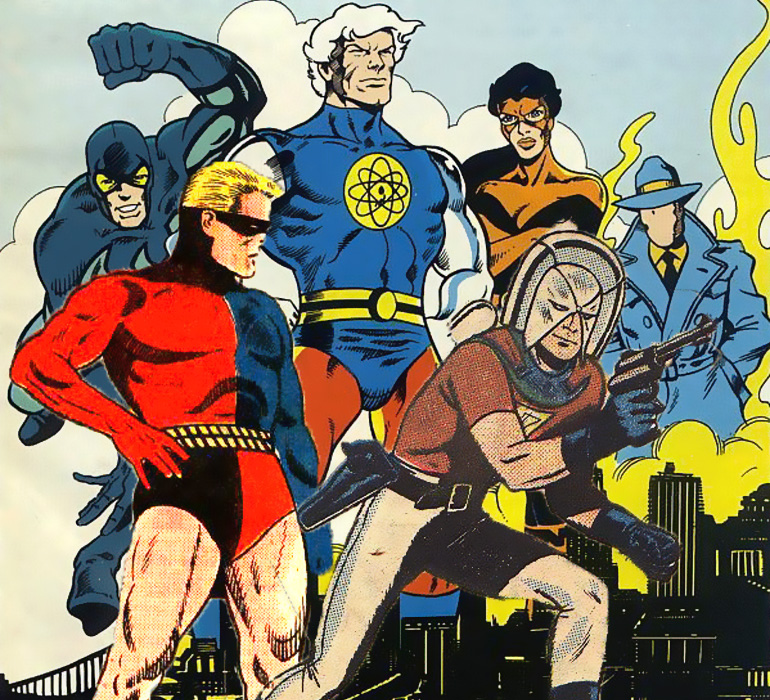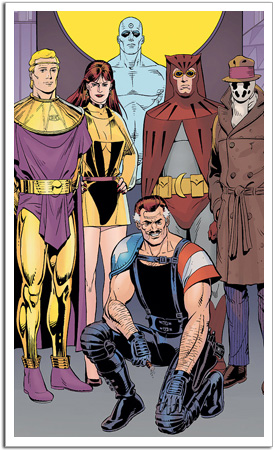A couple of days ago in the blog post Crediting Bill Finger I stated Mr. Finger, while very much deserving of finally being acknowledged as a co-creator of Batman, isn’t the only one that should be credited. I pointed out that Shadow author extraordinaire Walter B. Gibson also might deserve some credit as Mr. Finger and company, when they wrote the very first Batman story which appeared in Detective Comics #27 essentially made a comic book adaptation of one of Mr. Gibson’s Shadow stories. While this was one (and the most obvious) of the Gibson written Shadow stories that clearly influenced Mr. Finger, I nonetheless feel I came off waaaay too glib in my posting and for that I apologize.
The fact is that while the very early Batman stories may have cribbed certain ideas (and even complete stories) from The Shadow works by Mr. Gibson, the Batman character and his world quickly moved off into other very fascinating and often unique directions. While Mr. Gibson and some of his Shadow novels were an inspiration at the start of the Batman series, so too were other works and, again, Batman would go off into its own unique direction and for that Mr. Finger richly deserves the lion’s share of the credit for what he did.
I suppose the above should clue you in on the fact that I’m incredibly fascinated with artistic creation(s) and the credit deserved for them.
Perhaps one of the most interesting of the “creator” issues, to me, is that regarding author Alan Moore and arguably his most recognized creation, Watchmen.
Back in the 1980’s author Alan Moore became a superstar writer, and deservedly so, for his work on Marvel (later Miracle) Man, V for Vendetta, and Swamp Thing. Watchmen would come at the tail end of his association with DC Comics in the form of the 12 issue limited series. Watchmen explored the dark side of what the world would be like with Superheroes. It was subsequently made into a film…
It was because of what followed after the release of this series that Mr. Moore had a major falling out with DC Comics and left the publisher never to return. My understanding of the situation, based on interviews Mr. Moore gave after the fact, was when he and DC Comics came to an agreement about publishing Watchmen the contract specified that once the series was out of print, something which Mr. Moore expected to happen rather quickly, the rights of this series would revert to Mr. Moore and artist Dave Gibbons. However, Watchmen proved an incredible success and DC has been able to keep reprinting it since its first publication in 1986. I’ve read there were other issues which caused Mr. Moore’s ire as well regarding royalties, but I don’t know enough about them to comment. Suffice to say Mr. Moore’s anger toward DC stemmed to a large degree over the fact that he lost control of Watchmen when he thought it would come to him soon after the initial publication.
When Mr. Moore left DC Comics in 1989 it was with considerable rancor and, as an author I could sympathize with his desire to control his own works.
But we’re talking about creative credits here and this is where certain facts rear their heads.
To begin, Mr. Moore originally conceived Watchmen as a story which would feature the various Charlton superheroes that DC Comics had at that time acquired. Below is an image of those various Charlton Characters. From upper left and moving clockwise you’ve got The Blue Beetle, Captain Atom, Nightshade, The Question, The Peacemaker, and Peter Cannon/Thunderbolt.

And here we have the principle cast of Watchmen. From left and moving clockwise, you have Ozymandias (Peter Cannon), Silk Specter (Nightshade), Doctor Manhattan (Captain Atom), Nite Owl (The Blue Beetle), Rorschach (The Question), and The Comedian (Peacemaker).

Mr. Moore’s concept for a Charlton based Watchmen proved difficult for DC Comics to accept as the story was self-contained and ended in such a way it would be difficult to re-use the recently bought characters in any other way.
Therefore Mr. Moore modified the established Charlton characters into these “new” characters and the series was greenlighted and published.
Mr. Moore’s story, unquestionably, was “his” concept, a darker take on what would happen in the real world if Superheroes existed. He had already begun that process with Marvel (Miracle) Man and Watchmen was the culmination of that theme (I’ll ignore the climax of the book and its too-striking resemblance to the Outer Limits episode The Architects of Fear because it is my suspicion this might have been nothing more than an innocent coincidence).
The facts tell us that while Mr. Moore is clearly the creator and writer of the Watchmen story, every one of the characters he used within them were thinly veiled versions of other authors/artists creations. Which makes me wonder: Should the creators of the various Charlton heroes which were the basis of the Watchmen characters not be entitled to some kind of recognition -and perhaps even monetary compensation- for the characters they created and Mr. Moore essentially appropriated?
Further, because the project was initiated because DC Comics purchased the Charlton characters and those were the ones that provided the impetus to Mr. Moore’s story, don’t the people behind that purchase also deserve some credit for bringing these characters to Mr. Moore’s attention and use?
I suppose what I’m trying to say is that sometimes –sometimes– creative credit is a harder thing to assign than it at first seems.
